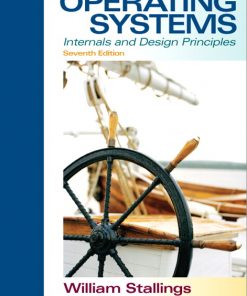Introduction to Social Problems 10th Edition Sullivan Test Bank
$55.00
Introduction to Social Problems 10th Edition Sullivan Test Bank
You will receive this product within 24 hours after placing the order
978-0205896462
Chapter 03 – Family-Related Problems
Multiple Choice Questions
1. The practice of having only one spouse at a time is known as ________.
a. bigamy
b. adultery
c. polyamory
d. monogamy
Answer: d
Question Title: TB_03_01 The Family in Society, Remember, LO 3.1
Learning Objective: 3.1 Describe and compare what role the three sociological perspectives give to the family as an institution in society.
Topic: The Family in Society
Skill Level: Remember the Facts
Difficulty: 1–Easy
2. A family is said to be an egalitarian family if ________.
a. the husband and wife share power and authority somewhat equally between them
b. there is greater importance for family values than individual goals
c. the members have equal power and authority irrespective of their age and income
d. there are an equal number of male and female members
Answer: a
Question Title: TB_03_02 The Family in Society, Understand, LO 3.1
Learning Objective: 3.1 Describe and compare what role the three sociological perspectives give to the family as an institution in society.
Topic: The Family in Society
Skill Level: Understand the Concepts
Difficulty: 1–Easy
3. Aaron lives with his wife and children in a neighborhood in which most families are nuclear. His brother lives separately in the same locality with his wife and children. Aaron and his brother visit each other’s houses regularly and help each other financially. Aaron’s family is an example of a(n) ________.
a. blended family
b. egalitarian family
c. modified extended family
d. pluralistic family
Answer: c
Question Title: TB_03_03 The Family in Society, Apply, LO 3.1
Learning Objective: 3.1 Describe and compare what role the three sociological perspectives give to the family as an institution in society.
Topic: The Family in Society
Skill Level: Apply What You Know
Difficulty: 2–Moderate
4. Educational institutions in the country of Moldiva are distinguished on the basis of social class. Admission to schools and colleges is based on the social class of a student’s family. Which of the following functions of a family best complements this form of society?
a. psychological support
b. regulating economic activity
c. providing affection and companionship
d. status conferral
Answer: d
Question Title: TB_03_04 The Family in Society, Apply, LO 3.1
Learning Objective: 3.1 Describe and compare what role the three sociological perspectives give to the family as an institution in society.
Topic: The Family in Society
Skill Level: Apply What You Know
Difficulty: 3–Difficult
5. According to the conflict perspective, the version of the family that is most prominent in society is likely to be the one that is ________.
a. capable of being stable and organized
b. suitable for the underprivileged people in society
c. favorable to the needs and demands of all generations of people
d. consistent with the values and benefits of the dominant groups
Answer: d
Question Title: TB_03_05 The Family in Society, Remember, LO 3.1
Learning Objective: 3.1 Describe and compare what role the three sociological perspectives give to the family as an institution in society.
Topic: The Family in Society
Skill Level: Remember the Facts
Difficulty: 1–Easy
6. ________ refers to a family in which males dominate in the regulation of political and economic decision making, and women and children are subordinate.
a. Monogamy
b. Oligarchy
c. Patriarchy
d. Anarchy
Answer: c
Question Title: TB_03_06 The Family in Society, Remember, LO 3.1
Learning Objective: 3.1 Describe and compare what role the three sociological perspectives give to the family as an institution in society.
Topic: The Family in Society
Skill Level: Remember the Facts
Difficulty: 1–Easy
7. Nuclear families serve the interests of capitalist economic institutions because they ________.
a. maximize the number of consumption-oriented units in society
b. stress the importance of family values over that of individual values
c. are often male dominated
d. emphasize common ownership of material goods
Answer: a
Question Title: TB_03_07 The Family in Society, Understand, LO 3.1
Learning Objective: 3.1 Describe and compare what role the three sociological perspectives give to the family as an institution in society.
Topic: The Family in Society
Skill Level: Understand the Concepts
Difficulty: 2–Moderate
8. From the conflict perspective, family forms change when ________.
a. existing family forms cause dysfunction and disorganization in the society
b. people are socialized to accept their society’s form of the family as natural
c. new groups acquire the power necessary to gain acceptance for a new form of family
d. people want a drastic change in society to establish stability and equilibrium
Answer: c
Question Title: TB_03_08 The Family in Society, Understand, LO 3.1
Learning Objective: 3.1 Describe and compare what role the three sociological perspectives give to the family as an institution in society.
Topic: The Family in Society
Skill Level: Understand the Concepts
Difficulty: 2–Moderate
9. According to the interactionist perspective, the form of family that is right for a society depends on ________.
a. the society’s population
b. social definition
c. the type of governance
d. religious beliefs
Answer: b
Question Title: TB_03_09 The Family in Society, Remember, LO 3.1
Learning Objective: 3.1 Describe and compare what role the three sociological perspectives give to the family as an institution in society.
Topic: The Family in Society
Skill Level: Remember the Facts
Difficulty: 1–Easy
10. ________ refer to marriages in which parents would select marriage partners for their children, sometimes shortly after their birth, based on what was considered best for the family, and the prospective marriage partners had little other choice.
a. Participant-run romances
b. Arranged marriages
c. Parent-run courtships
d. Plural marriages
Answer: b
Question Title: TB_03_10 Attitudes Toward Marriage and Family, Remember, LO 3.2
Learning Objective: 3.2 Summarize the attitudes of people toward marriage and family in the United States and other modern, industrial societies.
Topic: Attitudes Toward Marriage and Family
Skill Level: Remember the Facts
Difficulty: 1–Easy
11. In participant-run courtship processes, a primary factor drawing couples toward marriage is ________.
a. familial influence
b. financial stability
c. romantic love
d. a belief in the system of marriage
Answer: c
Question Title: TB_03_11 Attitudes Toward Marriage and Family, Remember, LO 3.2
Learning Objective: 3.2 Summarize the attitudes of people toward marriage and family in the United States and other modern, industrial societies.
Topic: Attitudes Toward Marriage and Family
Skill Level: Remember the Facts
Difficulty: 1–Easy
12. One of the reasons for the declining role of parents in deciding their children’s marriage is a(n) ________.
a. decreasing importance for kinship in modern societies
b. decreasing faith in religion
c. decreasing economic independence of children
d. increasing importance for the family as a social institution
Answer: a
Question Title: TB_03_12 Attitudes Toward Marriage and Family, Understand, LO 3.2
Learning Objective: 3.2 Summarize the attitudes of people toward marriage and family in the United States and other modern, industrial societies.
Topic: Attitudes Toward Marriage and Family
Skill Level: Understand the Concepts
Difficulty: 1–Easy
13. The refined divorce rate can be used to ________.
a. find the most common reason for divorce
b. compare the stability of marriages from one year to the next
c. determine the minimum number of years a couple would stay together
d. find the number of divorce cases filed every year
Answer: b
Question Title: TB_03_13 Divorce, Remember, LO 3.3
Learning Objective: 3.3 Summarize the data on the extent of divorce in the United States over time, analyze the reasons why people divorce, assess which couples are at greatest risk of divorce, and characterize the consequences of divorce for people.
Topic: Divorce
Skill Level: Remember the Facts
Difficulty: 1–Easy
14. Which of the following is a similarity between serial monogamy and polygamy?
a. Both allow a person to have more than one spouse in their entire lifetime.
b. Both are legal in the United States.
c. Both deny women the right to remarry, while men are allowed to remarry.
d. Both allow a person to have multiple spouses at the same time.
Answer: a
Question Title: TB_03_14 Divorce, Analyze, LO 3.3
Learning Objective: 3.3 Summarize the data on the extent of divorce in the United States over time, analyze the reasons why people divorce, assess which couples are at greatest risk of divorce, and characterize the consequences of divorce for people.
Topic: Divorce
Skill Level: Analyze It
Difficulty: 3–Difficult
15. A(n) ________ is a family based on kinship ties that accumulate as a consequence of divorces and remarriages.
a. extended family
b. matrifocal family
c. traditional family
d. blended family
Answer: d
Question Title: TB_03_15 Divorce, Remember, LO 3.3
Learning Objective: 3.3 Summarize the data on the extent of divorce in the United States over time, analyze the reasons why people divorce, assess which couples are at greatest risk of divorce, and characterize the consequences of divorce for people.
Topic: Divorce
Skill Level: Remember the Facts
Difficulty: 1–Easy
16. Which of the following is true of the differences in the difficulties faced by men and women after divorce?
a. Men are more likely than women to be distressed by increased parental responsibilities.
b. Women are more likely to complain about being gouged for child-support payments.
c. Women are much more likely than men to suffer economic decline.
d. Men suffer a more severe economic decline compared to women.
Answer: c
Question Title: TB_03_16 Divorce, Analyze, LO 3.3
Learning Objective: 3.3 Summarize the data on the extent of divorce in the United States over time, analyze the reasons why people divorce, assess which couples are at greatest risk of divorce, and characterize the consequences of divorce for people.
Topic: Divorce
Skill Level: Analyze It
Difficulty: 3–Difficult
17. Which of the following is true of the positive effects of divorce on children?
a. Children are given greater responsibility and a greater role in family decision making.
b. Children are less prone to delinquency.
c. Children are less likely to experience a divorce in their own marriage.
d. Children are more likely to perform better at school and have lower chances of dropping out of college.
Answer: a
Question Title: TB_03_17 Divorce, Understand, LO 3.3
Learning Objective: 3.3 Summarize the data on the extent of divorce in the United States over time, analyze the reasons why people divorce, assess which couples are at greatest risk of divorce, and characterize the consequences of divorce for people.
Topic: Divorce
Skill Level: Understand the Concepts
Difficulty: 1–Easy
18. Which of the following is true of dual-earner families?
a. The men in dual-earner families are more likely to be dissatisfied with their marriages.
b. Dual-earner couples are more likely to remain childless.
c. Dual-earner couples are less likely to have any form of stress in spousal relationships.
d. Dual-earner couples have a greater risk of divorce.
Answer: b
Question Title: TB_03_18 Diverse Family Lifestyles, Understand, LO 3.4
Learning Objective: 3.4 Describe the diverse family lifestyles that are found in modern societies and explain the reasons why they exist.
Topic: Diverse Family Lifestyles
Skill Level: Understand the Concepts
Difficulty: 1–Easy
19. Jeremy believes that women who work have better married lives and tend to be happier than women who do not work. Thomas opposes his opinion by saying that women who work have more stress in their spousal relationship. Whose argument is correct and why? Examine the following options and select the correct response.
a. Jeremy is correct because women who work are at less risk of divorce than women who do not work.
b. Jeremy is correct because women who work have more time to spend with their spouses and children.
c. Thomas is correct because mothers who do not work tend to be happier, healthier, and less depressed than mothers who work.
d. Thomas is correct because women who work are less likely to remain childless.
Answer: a
Question Title: TB_03_19 Diverse Family Lifestyles, Analyze, LO 3.4
Learning Objective: 3.4 Describe the diverse family lifestyles that are found in modern societies and explain the reasons why they exist.
Topic: Diverse Family Lifestyles
Skill Level: Analyze It
Difficulty: 3–Difficult
20. Lauren and Adrian have been in a relationship for two years. They are currently living together. They opted for this arrangement to get to know each other better and determine whether they are compatible before deciding on marriage. Which of the following terms best describes Lauren and Adrian’s current relationship?
a. serial monogamy
b. cohabitation
c. dual-earner family
d. extended family
Answer: b
Question Title: TB_03_20 Diverse Family Lifestyles, Apply, LO 3.4
Learning Objective: 3.4 Describe the diverse family lifestyles that are found in modern societies and explain the reasons why they exist.
Topic: Diverse Family Lifestyles
Skill Level: Apply What You Know
Difficulty: 2–Moderate
21. Which of the following best describes the domestic partner provision given by some city and county governments?
a. It provides equal power and authority to all wives in the households.
b. It mandates that couples in dual-earner families should share their expenses equally.
c. It accords cohabitants much the same benefits and rights as married couples.
d. It states that every member in an egalitarian family has equal rights and privileges.
Answer: c
Question Title: TB_03_21 Diverse Family Lifestyles, Remember, LO 3.4
Learning Objective: 3.4 Describe the diverse family lifestyles that are found in modern societies and explain the reasons why they exist.
Topic: Diverse Family Lifestyles
Skill Level: Remember the Facts
Difficulty: 1–Easy
22. What is the leading cause of traumatic death for children aged 4 and younger in the U.S. according to investigations?
a. child abuse and neglect
b. road accidents
c. prolonged illness
d. malnutrition
Answer: a
Question Title: TB_03_22 Violence in the Family, Remember, LO 3.5
Learning Objective: 3.5 Identify the nature and extent of violence in the family today and analyze the social conditions that produce it.
Topic: Violence in the Family
Skill Level: Remember the Facts
Difficulty: 1–Easy
23. Who among the following are especially at risk of using the most abusive forms of violence against their children?
a. parents in egalitarian families
b. poor parents with older children
c. poor single mothers
d. high-income families with young children
Answer: c
Question Title: TB_03_23 Violence in the Family, Remember, LO 3.5
Learning Objective: 3.5 Identify the nature and extent of violence in the family today and analyze the social conditions that produce it.
Topic: Violence in the Family
Skill Level: Remember the Facts
Difficulty: 1–Easy
24. Which of the following aspects of mass media has helped them play a central role in shaping the debate about problems in the modern family?
a. their tendency to downplay the negative aspects of modern families
b. their ability to remain unaffected by industrialization
c. their accurate portrayal of family lives in reality
d. their ability to influence people’s beliefs and values
Answer: d
Question Title: TB_03_24 Constructing Family Problems: Media Images, Understand, LO 3.6
Learning Objective: 3.6 Identify the ways in which media images have contributed to the social construction of family problems.
Topic: Constructing Family Problems: Media Images
Skill Level: Understand the Concepts
Difficulty: 1–Easy
25. How did the media portrayal of families in the 1960s and 1970s differ from reality?
a. Media portrayed families as always being two-parent nuclear families, while most families were single-parent families in reality.
b. Media portrayed families as single-parent families headed by men, while most single-parent families were headed by women in reality.
c. Media portrayed divorce as the common reason for most single-parent families, while death was the most common reason in reality.
d. Media portrayed high levels of poverty and inaccessibility to resources in poor families, while families were not so poor in reality.
Answer: b
Question Title: TB_03_25 Constructing Family Problems: Media Images, Analyze, LO 3.6
Learning Objective: 3.6 Identify the ways in which media images have contributed to the social construction of family problems.
Topic: Constructing Family Problems: Media Images
Skill Level: Analyze It
Difficulty: 3–Difficult
26. Which of the following aspects of family life in the U.S. today is downplayed by the media?
a. predominance of single-parent families headed by men
b. affluence and high-status of families
c. family conflicts and violence
d. intelligence, cleverness, and humor of family members
Answer: c
Question Title: TB_03_26 Constructing Family Problems: Media Images, Remember, LO 3.6
Learning Objective: 3.6 Identify the ways in which media images have contributed to the social construction of family problems.
Topic: Constructing Family Problems: Media Images
Skill Level: Remember the Facts
Difficulty: 1–Easy
27. What is the advantage of pluralistic family arrangements?
a. They reinforce the importance of traditional family types.
b. They permit people of many occupations, religions, and lifestyles to find a form of the family that best fits their values and needs.
c. They allow people to practice polygamy legally.
d. They give people the freedom to define the nature of their society based on the support for a particular lifestyle.
Answer: b
Question Title: TB_03_27 Future Prospects, Understand, LO 3.7
Learning Objective: 3.7 Elaborate on current social policies relating to the family and summarize how they will shape family forms in the future.











Reviews
There are no reviews yet.